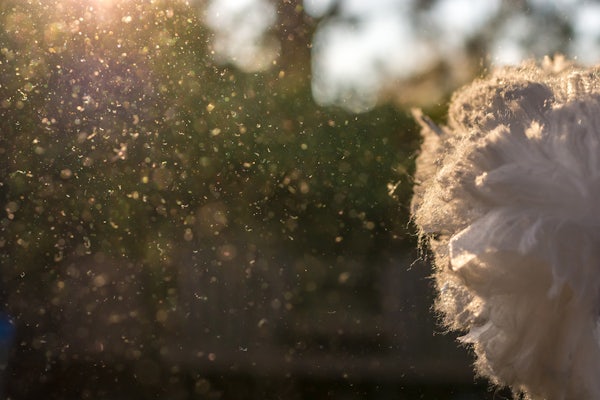Role of indoor dust on indoor environmental air quality gets closer look
Jenna Ditto to study dust chemistry transformations, impact of exposure to humans

House dust — the ever-present nuisance. The persistent substance is made up of a variety of particles, including dead skin cells and pet dander, and airborne pollutants that settle onto and stick to dust particles, creating a risk to human health.
Jenna Ditto, assistant professor of energy, environmental & chemical engineering in the McKelvey School of Engineering at Washington University in St. Louis, is taking a closer look at the chemistry of indoor dust with a three-year, $453,000 grant from the National Science Foundation.
“Our goal is to look at the complex mixture of chemicals within the dust and try to characterize not only what’s in the dust, but how the dust chemically transforms in a typical indoor environment,” Ditto said. “Dust particles are a reservoir for various chemicals that start in the air but may stick to the dust and persist there over time.”
Ditto and her team plan to combine indoor dust samples with chemicals such as motor vehicle exhaust and fumes from cooking or from burning biomass, then determine how the chemicals transform within the dust, what products result from the combinations and their impact on human exposure.
“Motor vehicle exhaust and biomass burning smoke from outdoors may enter homes and impact indoor environmental quality, while cooking is a major source that impacts indoor air directly,” Ditto said. “Our research will help us to understand more about how these different pollutant sources impact indoor dust chemistry, especially in homes more susceptible to higher concentrations of pollutants that transfer from air to dust and might persist in dust for long periods of time.”
Later in the research, Ditto’s team plans to use indoor dust samples from homes in the St. Louis area. When the team has determined chemical composition and exposure risk evaluations of the samples and indoor air, team members plan to share results with the public through an interactive online tool, providing an idea about the dust interactions in the region.
Ditto and her lab also plan to hold workshops for middle school students and their teachers through the university’s Institute for School Partnership.
The work is an outgrowth of one avenue of the work Ditto completed through a $25,000 Collaboration Initiation Grant from McKelvey Engineering and the Institute of Clinical and Translational Sciences at the School of Medicine in 2023. The program awards one-year grants to projects that facilitate collaborative research within McKelvey Engineering departments and other university departments for tenure-track faculty. The grants are a pathway for faculty to apply for larger interdisciplinary grants.




